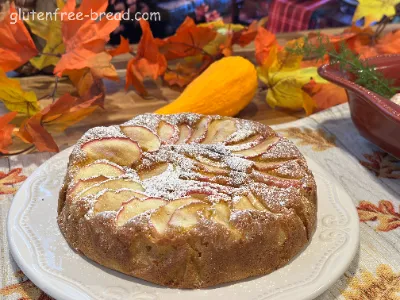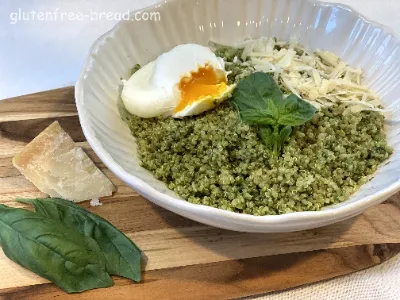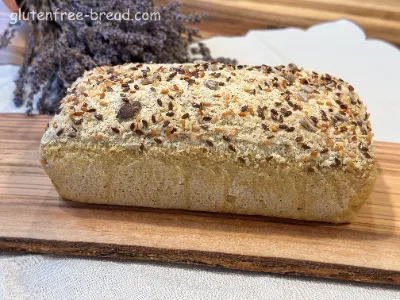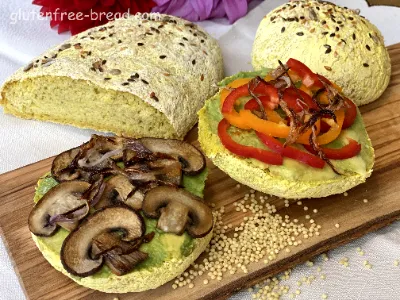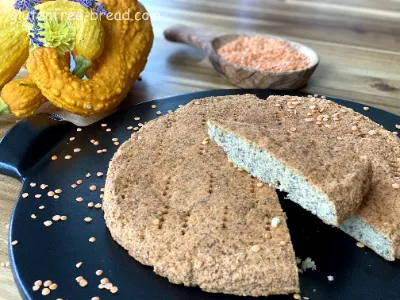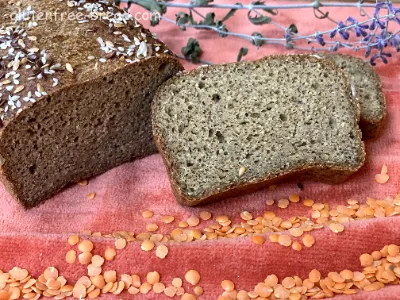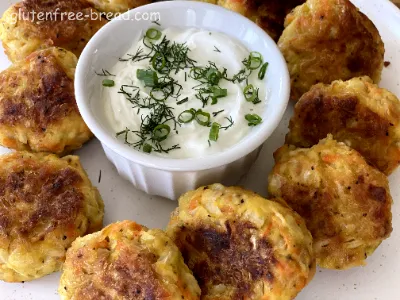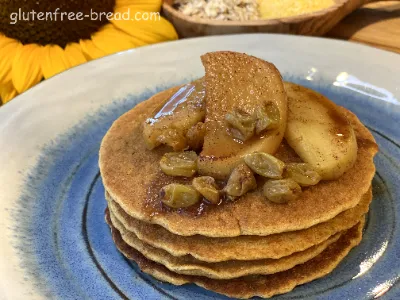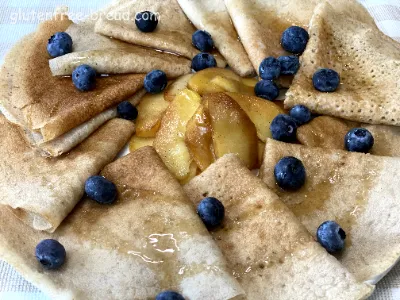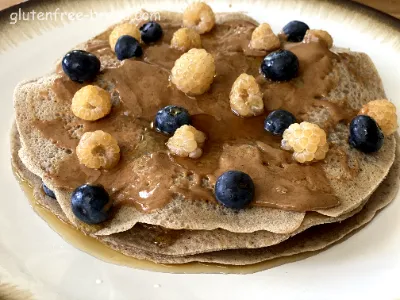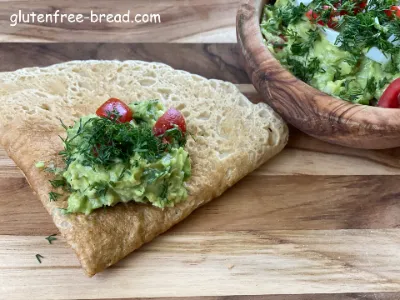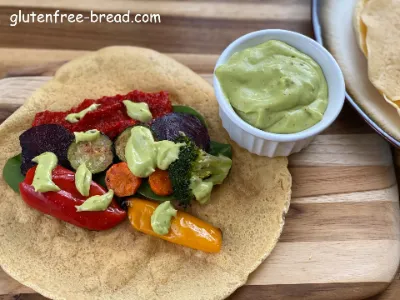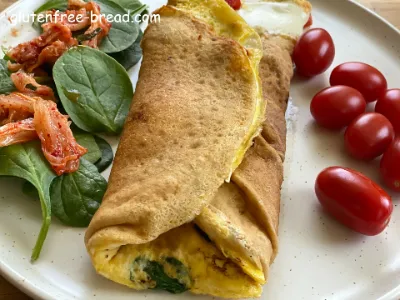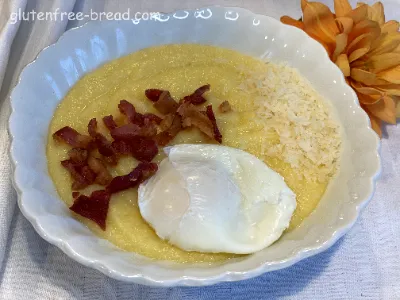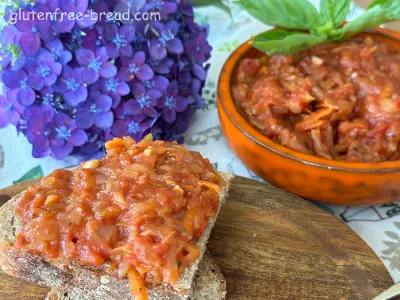What is a gluten-free diet?
A gluten-free diet excludes any foods that contain gluten, which is a protein found in wheat and several other grains. It means eating only whole foods that don’t contain gluten, such as fruits, vegetables, meat and eggs, as well as processed gluten-free foods like gluten-free bread or pasta. “Gluten is a protein naturally occurring in certain foods, but it can also be added to foods during processing for texture,” explains Rajagopal. Gluten can be used as a binding agent and flavoring, so you can sometimes find it in foods you wouldn’t expect. In addition to foods like pizza, pasta, cereal and baked goods, gluten can be in everything from soy sauce and ice cream to certain medications, beauty products and dietary supplements. Some people think going gluten-free means not eating any carbohydrates, but this isn’t the case. Lots of foods that contain carbs, such as rice, potatoes and beans, don’t contain gluten.
Who should eat a gluten-free diet?
People with celiac disease
A gluten-free diet is necessary for people with celiac disease, an autoimmune response to gluten that causes the body to attack the small intestine, causing belly pain, nausea, bloating or diarrhea. People with celiac disease can’t tolerate gluten in any form, and need to follow a gluten-free diet for the rest of their lives. If you have celiac and accidentally eat gluten, you’ll probably experience the same symptoms you did before you went gluten-free.
People with gluten sensitivity
Another condition that may prompt someone to cut gluten from their diets is a non-celiac gluten sensitivity, sometimes called gluten intolerance. “We don’t have a clear definition for gluten intolerance or a clear way to explain it,” says Rajagopal. “We know that some people eat something that contains gluten and then they don’t feel well.” It’s important not to assume that gastrointestinal irritation is the result of gluten. If you think you may have a gluten intolerance, Rajagopal recommends working with a physician and a registered dietitian to get to the bottom of your symptoms. “There isn’t a test for gluten intolerance, so we might try a process of elimination such as the low FODMAP diet,” says Rajagopal. This is a temporary eating plan that eliminates lots of foods that can irritate the gut, including wheat-based products. If gluten is the source of the irritation, you may notice an improvement in symptoms such as:
- Bloating
- Constipation or diarrhea
- Fatigue
- Gas
- Stomach pain
People who are allergic to wheat
People with a wheat allergy should avoid certain foods containing gluten, but not because of the gluten. Wheat triggers an immune response in their bodies, which can cause symptoms such as a skin rash, headache or sneezing. They can still eat gluten in other grains, including barley and rye.
Can you go gluten-free to lose weight?
People who adopt a gluten-free diet often lose weight, but it’s usually because they also cut out a lot of processed foods and refined carbohydrates that contain gluten. If you stop eating gluten to lose weight, it’s important to watch your portion sizes, get regular exercise and eat plenty of whole foods such as fruits, vegetables and lean proteins.
Gluten-Free Foods to Enjoy
Naturally Gluten-Free Grains: Enjoy gluten-free grains such as rice, corn, quinoa, millet, buckwheat, amaranth, teff, and gluten-free oats (labeled as such).
Gluten-Free Flours: Use gluten-free flours such as rice flour, corn flour, potato flour, tapioca flour, almond flour, coconut flour, chickpea flour, and sorghum flour in cooking and baking.
Fruits and Vegetables: Fresh fruits and vegetables are naturally gluten-free and provide essential vitamins, minerals, and fiber. Incorporate a variety of colorful fruits and vegetables into your meals and snacks.
Lean Proteins: Choose lean proteins such as poultry, fish, seafood, eggs, tofu, tempeh, legumes, nuts, and seeds, all of which are naturally gluten-free.
Dairy and Dairy Alternatives: Plain dairy products such as milk, yogurt, cheese, and butter are gluten-free. Dairy alternatives such as almond milk, soy milk, and coconut milk are also suitable options.
Nuts, Seeds, and Healthy Fats: Include nuts, seeds, and healthy fats such as olive oil, avocado oil, coconut oil, nuts, and seeds in your gluten-free diet for added flavor and nutrition.
Herbs, Spices, and Condiments: Most herbs, spices, salt, pepper, and natural condiments are gluten-free. However, always check labels for hidden sources of gluten in packaged condiments and sauces.
Are there risks to trying a gluten-free diet if you don’t have celiac disease?
If you cut all gluten out of your diet, there’s a risk that you could miss out on nutritious whole grains, fiber and micronutrients. Getting enough whole grains in your diet is especially important if you’re at risk for heart disease or diabetes. Whole grains can lower cholesterol levels and even help regulate your blood sugar. In addition, some gluten-containing foods are sources of important vitamins and minerals, such as B vitamins, iron and magnesium. Keep in mind that some processed gluten-free foods contain high amounts of unhealthy ingredients such as sodium, sugar and fat. Consuming these foods can lead to weight gain, blood sugar swings, high blood pressure and other problems. So, a gluten-free label doesn’t necessarily make a food healthy. If you don’t have celiac disease or gastrointestinal irritation, Rajagopal recommends removing highly processed foods from your diet before removing gluten. Add in more fruits, vegetables, whole-grain bread or pasta, and lean proteins. Many people find they feel better just by eating better, not by removing gluten.
Will I go through gluten withdrawal if I start eating gluten-free?
There’s no scientific evidence to suggest that people actually go through “withdrawal” when they stop eating gluten. Some people report feeling dizziness, nausea, extreme hunger and even anxiety and depression when they suddenly go from eating a lot of gluten to being gluten-free. These symptoms usually go away after a few weeks on a gluten-free diet, but talk to your health care provider if they persist.
How do I get started with a gluten-free diet?
- Substitute oat, buckwheat, quinoa or other gluten-free or alternative grain flours for wheat flour in cooking and baking.
- Read ingredient labels carefully to check for any traces of wheat. Some artificial colors and seasonings also contain gluten.
Information for using wheat substitutes
One cup of wheat flour equals:
- 1 cup rye meal
- 1 to 1 1/4 cups rye flour
- 1 cup potato flour
- 1 1/3 cups rolled oats or oat flour
- 1/2 cup potato four plus 1/2 cup rye flour
- 5/8 cup potato starch
- 5/8 cup rice flour plus 1/3 cup rye flour
How to read a label for a wheat-free diet
Be sure to stay away from foods that contain any of the following ingredients:
- Bran
- Bread crumbs
- Bulgur
- Cereal extract
- Couscous
- Cracker meal
- Durum
- Einkorn
- Emmer
- Farina
- Flour (enriched, graham, high-gluten, high-protein, whole-wheat)
- Matzoh, matzoh meal
- Pasta
- Seitan
- Semolina
- Spelt
- Vital gluten
- Wheat berries, bran, germ, gluten, grass, malt, sprouted, starch
Other possible sources of wheat or wheat products
Ingredients that may contain wheat:
- Gluten
- Gelatinized starch
- Gum
- Hydrolyzed vegetable protein
- Kamut
- Modified food starch
- Modified starch
- Natural flavoring
- Soy sauce
- Starch. Unless otherwise stated on the food label, the single word starch in an ingredient list means cornstarch. Starches from other sources should be noted by some non-misleading term that means the source of the starch, for example: wheat starch.
- Surimi
- Vegetable starch









